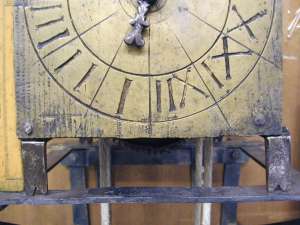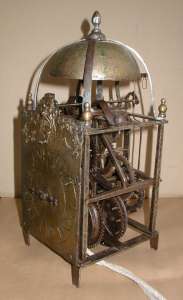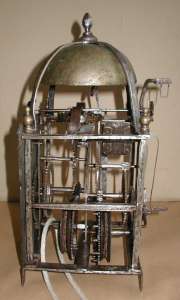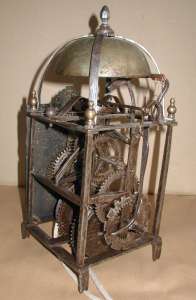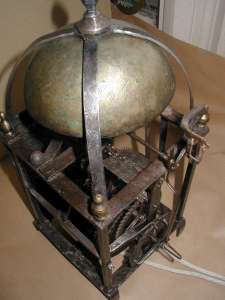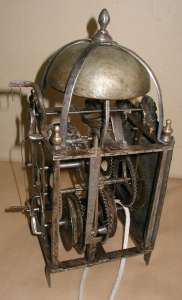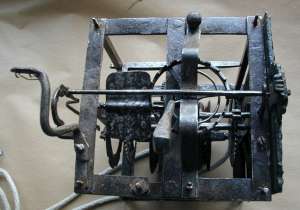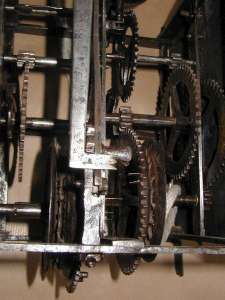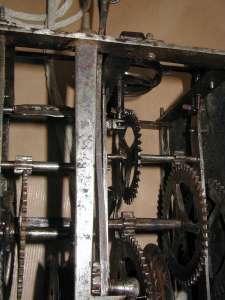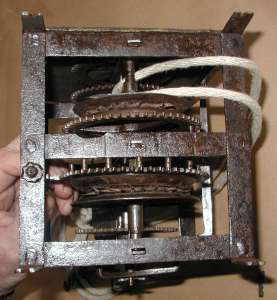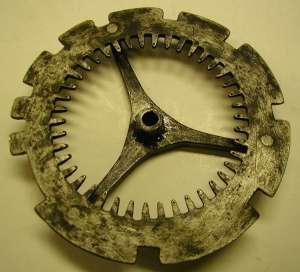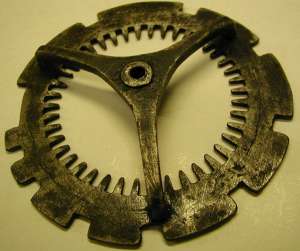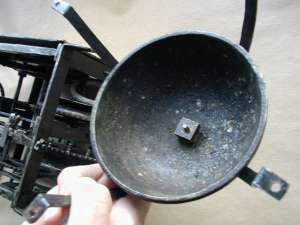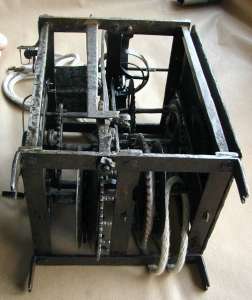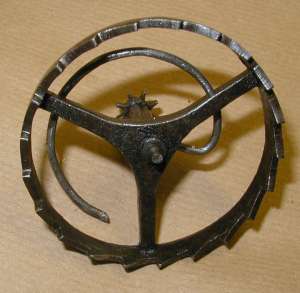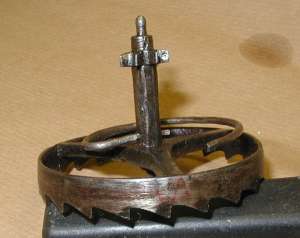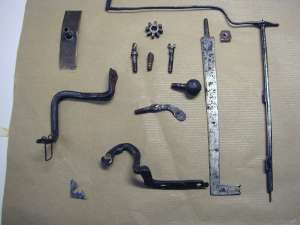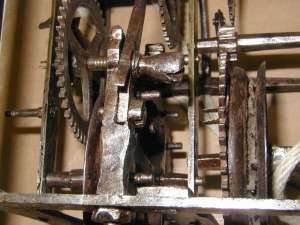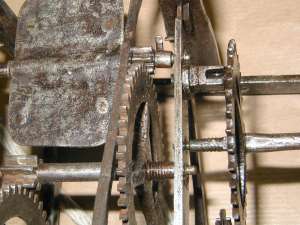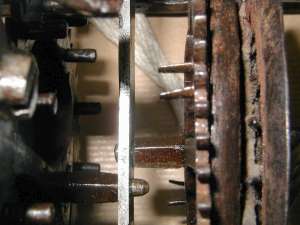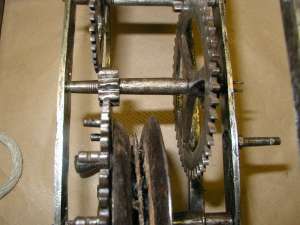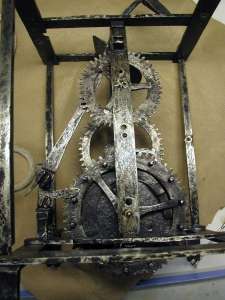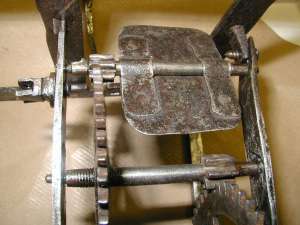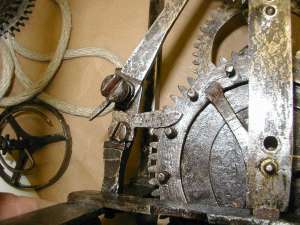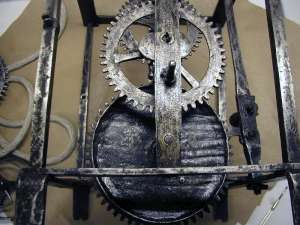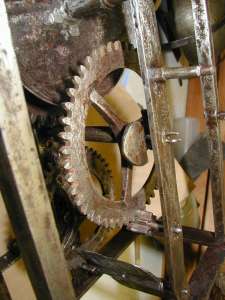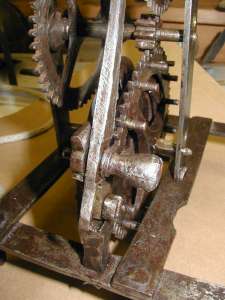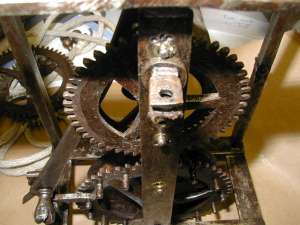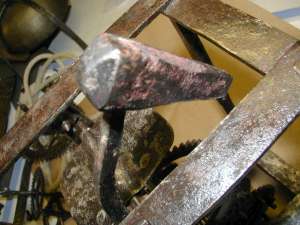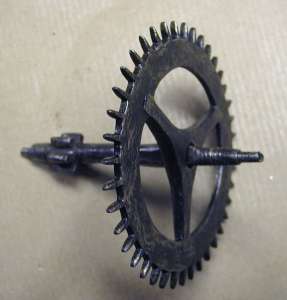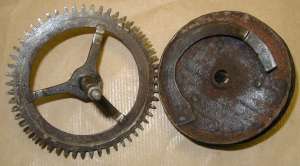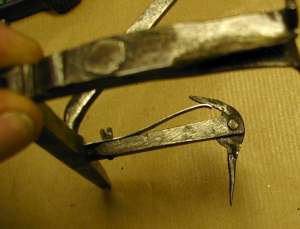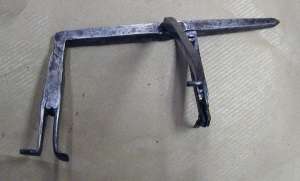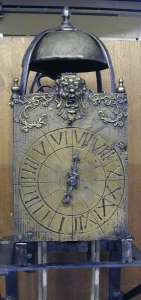
|
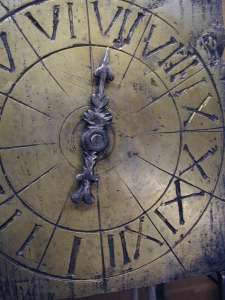
|
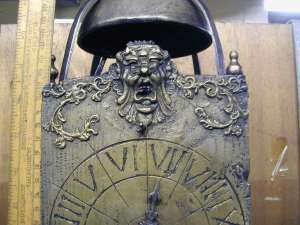
|
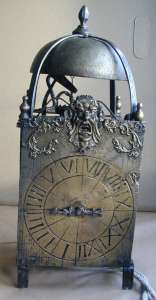
|
|
Dial view.
|
Dial detail.
|
Close up of Dial
|
Dial
|
The dial plate marked out like a crude sundial with a grotesque face and automation, a tongue moving in a out from
a cam on the escape wheel. The dial with roman numerals, unusual reading upside down, or is the clock being read by
the grotesque. The iron hand looking like an arrow, lets you, if you forget which end of the hand you are looking at,
reads as any other single handed clock. As in fact the dial is laid out in a mirror image, deliberate or a folly. Further
investigations on the dial plate revel it being made in two parts the face and garland being cast onto the dial plate, no
easy task. After the dark ages, the renaissance period revelled in automation decoration and grotesques.
The brass dial plate is attached by a single iron screw, just below the face . There are location tabs from the bottom
of dial plate to the frame. The cage like frame is of a strap iron construction, as Turret clocks in the middle ages.
The frame riveted and wedged together. The wheels are forged and each tooth hand cut and filed. All the wheels have
the dots on the tips of the teeth showing the marking out technique. They are mounted on forged and beaten Arbor's which
have threads to take the wheels. Ingenious as this helps when aligning with the hand filed pinions. The escape wheel pinion
is engaged at 90 degrees to the third wheel's teeth, much like flour mills wheels of the 14th century. The marvellous
hammer spring screw, shaped hammer stop, and typical mediaeval hammer, a theatrical shape hitting the bell heavy side on.
There is no warning on the strike side as this clock uses a sluiter on the second wheel and once striking commences the
speed is controled from a huge sail like fly.
The countwheel with internal cut teeth engaging the two pinned pinion of report, cut directly on the great wheel arbor.
The clock has now been placed an a custom made planished steel stand and has replaced gothic style weights and counter weights.
The countwheel has the best clues to when and where this clock was made, the countwheel appears to strike Canonical hours.
This is known as the 1-6 system using only 84 stokes every 24 hours saving on power thus increasing running time .
This mediaeval system used in Italy in the monasteries.
Italian Cistercians throughout this period were very skilled metallurgists and they were expert in working with iron.
These combined facts lead us to believe that this clock is an important part of the history for horological interest.
This clock was part of the Venema Clock Collection in Holland.
Restoration by Richards of Burton, (Clockmaker's)
Woodhouse Clock Works, Swadlincote Road, Woodville,
Swadlincote, Derbyshire, DE11 8DA.
Tell 01283 219155
E-mail rob@clock-works.clara.co.uk
Established 32 years




